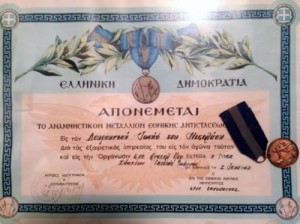
“The secret of Happiness is Freedom, and the secret of Freedom, Courage.” – Thucydides (460 BC – 395 BC), Greek Historian. Nikos Douroudakis and Stavros Katsoulakis from Queens, New York, immigrants from Sfakia, Crete, related incredible stories of heroism and perseverance in peace and war. Crete has untold stories of heroism rarely discussed.
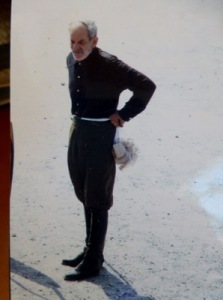
Douroudakis holds a Certificate and the National Resistance Hero Medal given to his late father, Sifis Douroudakis, prominently displayed in his living room. The National Resistance medal “was in support of the government against powers who wanted to destroy Greece,” said Douroudakis. “There was no Civil War in Sfakia, Crete. Action was only in Athens and the big cities. We had Vendetta.” In the blockbuster mini-series “Tis Agapis Maheria” (The Knifing of Love), a police officer said to a Cretan “we must follow Greece’s laws.” The protagonist replied, “This is not Greece. This is Sfakia”. See the miniseries at http://www.youtube.com/watch?v=KINuTAxqZS0
The Certificate and the National Resistance Hero Medal were given by Minister Stilianos Koundouros, Department of Defense of the Hellenic Republic on June 2, 1962. The Certificate reads: “This Commemorative Medal as a National Resistance Fighter is awarded to Iosif (Joseph) Douroundou (Douroudakis) for his exceptional service in this struggle and in the organization of EAO (Ethnikes Antistasiakes Omades or National Resistance Groups) in Sfakia under the leadership of Mayor John Katsias.”
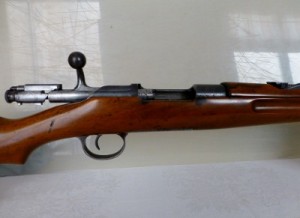
Nikos’ brother, George Douroudakis, described the unique history of their father in an internet interview from Athens, Greece. “Sifis Douroudakis or Douroundous (or Ndoutoundous, Katsoulos, curly-haired, or Katsoulosifis) was born in 1897 in Sfakia, Crete. These were the Black Years of Greece’s participation in the Greco-Turkish War.” According to Wikipedia, “The Greco-Turkish War of 1897, also called the Thirty Days’ War and known in Greece as the Black ’97 or the Unfortunate War… Its immediate cause was the question over the status of the Ottoman province of Crete whose Greek majority long desired union with Greece. Despite a decisive Ottoman military victory, as a result of the intervention of the Great Powers, after the war, an autonomous Cretan State under Ottoman suzerainty was established the following year, with Prince George as its first High Commissioner. This was the first war effort in which the military and political personnel of Greece were put to test after the Greek War of Independence in 1821,” http://en.wikipedia.org/wiki/Greco-Turkish_War_(1897).
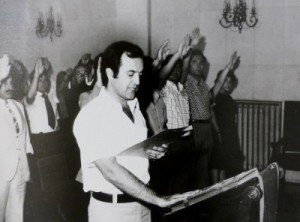
George continued by saying “Many children of agricultural families had difficult childhood. From young children, they were instilled in the Sfakia heroic ethics and loyalty to family. His generation had a deep respect for education that was acquired in the military where they became proficient in writing and reading.” At http://en.wikipedia.org/wiki/Sfakians, “The Sfakians are the inhabitants of the region of Sfakia located in Western Crete. The Sfakians hold themselves to be the direct descendants of the Dorians who invaded the island around 1100 B.C. The inhabitants of Sfakia have faced numerous foreign invaders, to which fact they owe their reputation as courageous warriors that they have had for centuries as cousins of the Maniots and Souliots.”
http://www.explorecrete.com/crete-west/EN-Sfakia-people.html states “The Sfakians (Sfakianoi)…look different from other Cretans. Here you will find many taller, fair-haired men and women with light eyes and skin… Many major Cretan risings against the Venetians and later the Turks began in Sfakia. The conquerors never lived here, not only because it was a tough life in the mountains, but mainly because they were afraid of the inhabitants, who were used to living free. Today the Sfakians remain genuine, fine specimens of Cretan manhood, always warlike. There are guns, military or ‘civilian’, in almost every house. They come out at weddings, christenings and every other celebration. Shots are fired to express joy or just for target practice using road signs. As the Sfakians like to say, ‘If we had this level of armament in 1940, the Germans would never have taken Crete…’ This excessive sense of honor is the reason that the vendetta, the custom of revenge and taking the law into one’s own hands, has marked Sfakia more than any other part of Crete, plunging families into mourning and emptying whole villages… Mass tourism has not come to Sfakia and probably never will, thanks to its mountainous terrain and inaccessibility.” To understand the spirit of the Cretan, listen to the music in the bibliography at the end.
George Douroudakis explains that his father fought in two wars: “the Asia Minor Campaign from 1919 to 1922 and the Battle of Crete, a period of six years. We found his rifle in the Benaki Museum with his name inscribed on it,” said George. “On August 31, 1922, the Cretan Division left Asia Minor from Cesme, or Krini as the Greeks called their city before the Asia Minor Catastrophe, for Chios.” Nikos added that “my father and the Cretan division helped to evacuate civilians to Chios from Cesme. This was the first time my father experienced war. When Kemal was at the Battle of Afyonkarahisar-Eskişehir on August 13, 1922, Sifis Douroudakis was at the line, five kilometers from his brother Manoussos, who was wounded in action. From September 1921 to August 1922, he fought at various points along the 600 kilometer line. Manoussos was in Asia Minor from September 13, 1921, to August 1922.”
The Douroudakis brothers participated in the battle that sealed the destiny of Hellenism in Asia Minor. “Between June 27 and July 20, 1921, a reinforced Greek army of nine divisions launched a major offensive, the greatest thus far, against the Turkish troops commanded by Ismet Inonu on the line of Afyonkarahisar-Kutahya-Eskishehir. The Greeks’ plan was to cut Anatolia in two, as the above towns were on the main rail-lines connecting the hinterland with the coast. Eventually, after breaking the stiff Turkish defense, they occupied these strategically important centers. Instead of pursuing and decisively crippling the nationalists’ military capacity, the Greek Army halted. In consequence, and despite their defeat, the Turks managed to avoid encirclement and made a strategic retreat on the east of the Sakarya River, where they organized their last line of defense. This was the major decision that sealed the fate of the Greek campaign in Anatolia,” according to http://en.wikipedia.org/wiki/Greco-Turkish_War_(1919-22)
“Our father’s generation was born to fight,” explained Nikos, my Queens, New York, neighbor. “Our father, Sifis, was six feet tall. In those years everyone had to fight for their country. His first wife died in her youth. He married again on November 3, 1940. He was drafted in the army on his wedding night because of the German attack on Greece.”
Sifis Douroudakis was an active member of the National Resistance Movement against the Axis Powers, honored by this unique medal and certificate. His name is listed as a hero in the military record of Rouf in Athens with his fellow National Defense fighters from Sfakia, Crete. As a farmer in the Lefka Ori (“White Mountains” is a mountain range located in Western Crete in the Chania prefecture), he protected British, Australian and New Zealander soldiers hiding from the Germans in the spring of 1944. The Germans gathered 32 farmers from Sfakia to kill. Sifis and his brother George were included. By chance, Sifis escaped the massacre. But his brother George was killed. Sifis continued the rescue of British, Australians and New Zealanders to Egypt. Nikos said “on May 9, New Zealanders celebrate their escape to Egypt at the Church of Panagia Thymiani, near the village of Komitades. There is a monument in Sfakia commemorating the evacuation of British and ANZAC forces (Allied Naval Squadron).” 10,000 British and ANZAC forces were evacuated from Sfakia by British and Australian warships.
“The Battle of Crete was unprecedented in three respects: it was not only the first battle where German paratroops (Fallschirmjäger) were used on a massive scale, but also the first mainly airborne invasion in military history, the first time the Allies made significant use of intelligence from the deciphered German Enigma code, and the first time invading German troops encountered mass resistance from a civilian population. Because of the heavy casualties suffered by the paratroopers, Adolf Hitler forbade further large-scale airborne operations. However, the Allies were impressed by the potential of paratroopers and started to build their own airborne formations.
From the very first day of the battle, everywhere on the island, Cretan civilians – men, women, children, priests, monks, and even nuns, armed and otherwise – joined the battle with whatever weapons were at hand. In some cases, ancient matchlock rifles which had last been used against the Turks were dug up from their hiding places and pressed into action. In other cases, civilians went into action armed only with what they could gather from their kitchens or barns, and several German parachutists were knifed or clubbed to death in the olive groves that dotted the island.
This was the first occasion in the war that the Germans encountered widespread and unrestrained resistance from a civilian population, and for a period of time, it unbalanced them. However, once they had recovered from their shock, the German paratroopers reacted with equal ferocity, killing many Cretan civilians… The Holocaust of Viannos and the Massacre of Kondomari…. Most Cretan partisans wore no uniforms or identifying insignia such as armbands or headbands, the Germans felt free of all of the constraints implied by the Hague conventions and killed both armed and unarmed civilians indiscriminately,” http://en.wikipedia.org/wiki/Battle_of_Crete.
Now world wars do not exist. Sfakians such as George Douroudakis channel their energies in academic achievement and business. George is brilliant and proficient in seven languages. He was first in his class from the Kapodistrian University of Athens in 1976. He was told at Graduation that he was Valedictorian. George recited the Graduation Oath representing the Student Body. His son, Iosif Douroudakis is an Orthopedic Surgeon.
“The rest of his life, our father gave what he could for his country,” said Nikos. “Our Father did not talk about WWII. Our brother George asked questions and discovered his war record. He died in 1984 at the age of 87, leaving behind a unique legacy in Sfakia.”
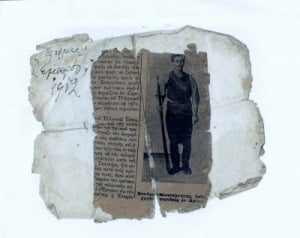
Stavros Katsoulakis of Queens, New York, related an amazing legacy of his grandfather and father from Sfagia. “In Sfagia, the main road is called Stavrou Katsouli Oplahirgos (Fighter for his Country) and is named after my grandfather,” he said. “Stavros, who was born in the 1880’s, organized a group of Sfagian Cretan fighters to free Epirus in the Balkan Wars of 1912. His 12-man volunteer Cretan group encircled a Hani (like a hotel). He went in through a back window, shooting all Turkish defenders, except for one wounded man. The wounded Turk shot him in the back and shot my grandfather Stavros. As he was dying, he gave his two pistols and silver sword to his companions to give to his three-month old son as his inheritance and a code of honor, courage and loyalty to one’s country. He died fighting the Turks at Driskos.” Driskos is outside of Ioannina, Epirus.
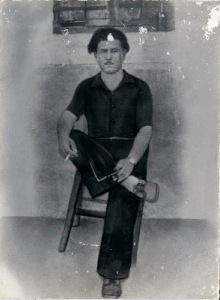
My neighbor, Stavros’ father, also called Stavros, grew up in an orphanage. He learned a trade, an education and to play the trumpet and mandolin. “He followed the footsteps of his late father. He fought the Germans in WWII. He organized a group of Sfagian fighters on the side of the Allies. The Germans burnt an apple orchard to catch my father who was in the Greek Resistance. A newspaper article in August 1950 stated “the Group Leader Stavros Katsoulis, 38 years of age, organized a group of two hundred volunteers to enter the Korean War, upon permission from the Greek government. Fought in the Albanian War (1939-1940) and the Battle of Crete. The Germans were persecuting him for three years. He is viewed by his contemporaries as one of the bravest Cretan Group Leaders. He is one of the organizers of the Resistance Movement against the Germans. He Fought with Group Leader Pavlos Gyparis. He is ready to fight on the American side against their enemy in Korea.”
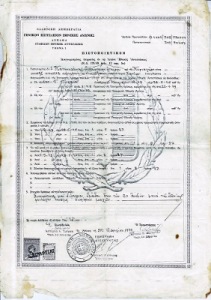
The newspaper said that Group Leader Katsoulis believed “it is our obligation. The Americans under the Truman Doctrine helped us rebuild our lives and provide food. It is our obligation to help our Allies in Korea under the United Nations flag, fighting for Universal Justice and freedom.”
Captain Katsoulis described his motives. “Listen,” he said. “My father was a Group leader fighting in Epirus in 1912. In one of the major battles, he fell, fighting heroically. Before he died, he asked his fellow fighters to give me one last request: ‘Tell my son I died for my country. I leave him a blessing and curse to fight whenever it is necessary for our Greece, sacrificing for our great country, family life and wealth.” The Greek government did not give the Sfagians permission to fight in the Korean War. Would anyone today volunteer to join the United Nations for freedom and justice?
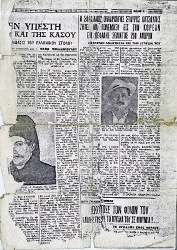
“Captain Stavros Katsoulidakis was awarded a Certificate of Appreciation from the Department of Defense, Department of Greek Resistance,” explained his daughter-in law, Zoe Katsoulakis, former Director of the New York State Division of Housing and Community Renewal. “The Certificate recognized his service in the fight of National Resistance from 1-9-43 to 5-28-45 from the village of Filakis, province of Apokoronou of the city of Chania. He organized and led a group of over twenty men who were engaged in various armed battles.”
These Cretan leaders have given their descendants a legacy more valuable than wealth. A higher calling to do what is best for one’s country and family. Our youth are looking for mentors with an honor code such as the Sfagians and the “300 Spartans.”
Links
https://www.youtube.com/watch?v=UwDomxyoFgU
https://www.youtube.com/watch?v=nzSjGLAVQpY
https://www.youtube.com/watch?v=3s0q4YfScc0
https://www.youtube.com/watch?v=GarTvUSrZTA
https://www.facebook.com/media/set/?set=a.639481066066597.1073741918.123855294295846&type=1
http://www.nzhistory.net.nz/war/the-battle-for-crete
http://www.greece.com/photos/destinations/Epirus/Ioannina/Mountain/Driskos/
See all the latest news from Greece and the world at Greekreporter.com. Contact our newsroom to report an update or send your story, photos and videos. Follow GR on Google News and subscribe here to our daily email!



